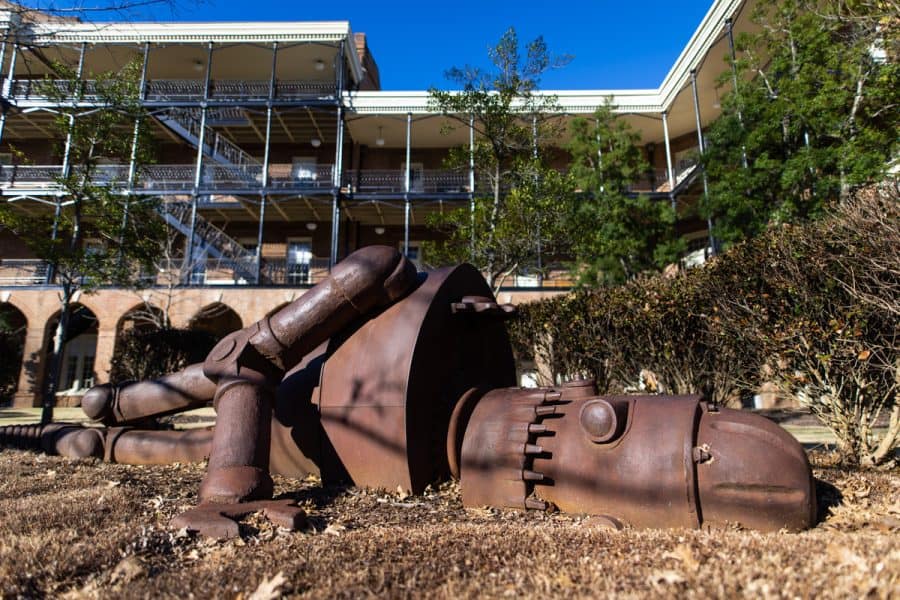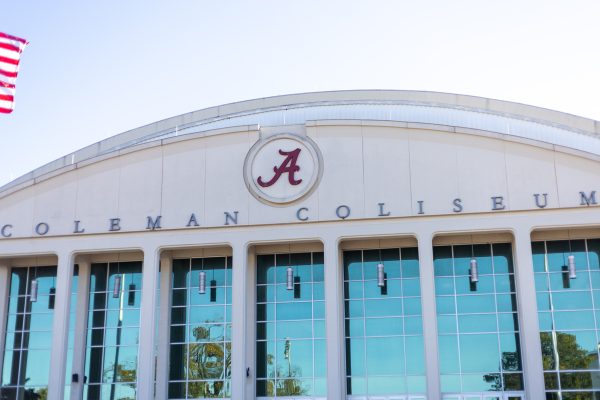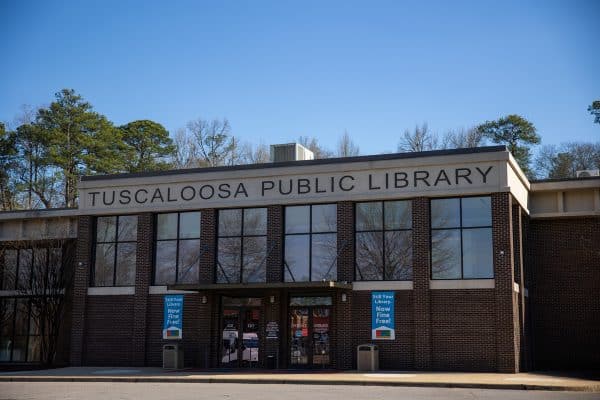Opinion | The University of Alabama needs more public beauty
February 15, 2023
One of the most poignant lyrics I’ve heard comes from the poem-turned-song, “Bread and Roses.” It goes, “Yes, it is bread we fight for / but we fight for roses, too.”
The poem emerged from the women’s suffrage movement and it was popularized as a union song following its use in a textile workers’ strike. “Bread and Roses” is an articulation of the human condition. It is an assertion that we have both physical and spiritual hungers, that we need sustenance and we need beauty.
We all fail to realize this truth everyday, individually and collectively, and this failure is made manifest by The University of Alabama campus.
Most people think of college as a stepping stone to a career. Sixty-five percent of Americans say that a lack of focus on workplace skills is a reason why college education is trending in the wrong direction.
Viewing university as an investment is meaningfully correct but horrifyingly insufficient. Immanuel Kant wrote that we should strive to always treat humanity, including our own, as an end as well as a means.
You are spending years of your life in pursuit of a collegiate education. Far too many college students treat their present self not as an end-in-itself but just as a means. We shouldn’t be depriving ourselves of the joie de vivre that we could be cultivating by neglecting our present spiritual needs in the pursuit of material gain.
There’s a reason why the dorm furnished with hackneyed movie posters is such a cliche. The desire to enjoy the aesthetic is as close to universal as any other desire, save survival instincts, and those posters are an easy way to sate it.
Is our yearning for aesthetic pleasure adequately met by our campus? A diet of only bread and no roses can nourish the body while starving the spirit.
The University is not a purely functional repository of intangible knowledge. It is a physical location where students eat, study and socialize. Students live their lives within the context of the University’s imposed paths and structures.
While its dorms, classrooms and dining facilities readily meet students’ needs, the University has not sufficiently invested in beauty. The best example of public beauty on campus, of something meant solely for our collective enjoyment, is the Woods Quad Sculpture Garden.
The sculpture garden features pieces by University of Alabama alumni and professors. It also makes the Woods Quad one of the most visually appealing places on campus. There’s nowhere else on campus where you can relax and listen to music next to a rusting robot corpse or see math shaped into metal in Lindsay Jones Lindsey’s “Fibonacci Spiral.”
The vast remainder of the University’s art collection is largely confined to spaces separate from the public sphere, to museums and galleries where you must actively seek it out.
Receiving a bachelor’s of fine arts at the University requires a capstone project and a master’s requires a thesis piece. Students do display their work in the University’s secluded galleries, but surely some of our talented student artists would love the opportunity to make their art part of people’s daily lives.
California Polytechnic State University maintains an ‘architecture graveyard,’ Poly Canyon, where architecture students can physically build their senior projects. Students have to find funding, but Cal Poly provides spaces for them to actually create their imaginative designs for future students and community members to marvel at and enjoy.
Why shouldn’t we encourage our community’s artists to use our public spaces as their canvases? Every bare brick wall should become a mural-to-be, and every hallway a gallery.
While more public art will cost money to maintain, we mustn’t conclude that it will be wasteful just because the benefits will not be measurable in dollars and cents. Exposure to art helps improve students’ emotional well-being, something incredibly helpful when college students need more attention paid to their mental health. It also aids learning and helps generate inspiration.
Rather than harming our educational environment, more public art would likely make our education more effective at actually instilling the new skills and knowledge we need, while making the years we spend here more enjoyable and our surroundings more magical.
We could enjoy a beautiful campus full of amazing art while still receiving a world-class education that prepares us for fulfilling careers. We can have bread and we can have roses.











